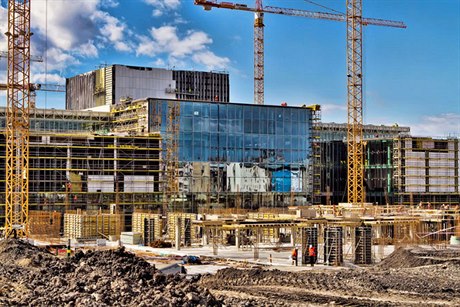The development of new shopping centers fell 30 percent across Europe, according to the results of a newly released report by property consultants Cushman & Wakefield (C&W). The drop is the steepest since 1982, and the overall completion of 5.2 million sqm gross leasable area (GLA) is the lowest level since 2004.
The development slowdown appears to have bottomed out, and the pipeline for new centers is already expected to reach 6.9 million sqm GLA by the end of 2011. Of this amount, 63 percent is projected to come from Central and Eastern Europe (CEE), with Russia and Turkey being far and away the continental leaders in new space over the next two years, accounting for 40 percent of all of Europe’s new development.
Czech pipeline
According to Alexander Rafajlovič, head of research at Cushman & Wakefield in Prague, the 2011/12 shopping center pipeline in the Czech Republic is less than half of Poland’s in absolute terms. On a per capita basis, though, development will be above the EU-27 average.
With the Prague market fairly saturated, developers will have to look elsewhere in the country for sites for new shopping centers though Rafajlovič said the addition of new centers can easily change this aspect. “The most significant center being developed at the moment is [Nová] Karolina in Ostrava,” he told Czech Position.
Dutch developer Multidevelopment broke ground for Nová Karolina in 2008, but the crisis put the initially ambitious city center reconstruction project on hold. At the beginning of 2010 Multi obtained €99 million in new funding and went ahead with construction of the 57,000 sqm shopping center.
Multi announced on April 5 that work on Nová Karolina has begun, and that it hopes to close up the building’s exterior in May with the completion of its glass facades. Preparation for a boulevard between the shopping center and project’s residential element is also underway.
In addition to shopping centers being developed over the next two years, Rafajlovič said there will be a comparable amount of new retail park area added to the Czech market.
Retail investment growth
While 2010 was a slow development year for shopping centers, their investment value began to strengthen again as yields hardened and European retail investment reached €38.5 billion on the year, 72 percent higher than the 2009 total. Toward the end of the year, in particular, investors that had previously been looking exclusively at the office sector began branching out into retail and industrial.
‘Retail investment focused almost exclusively on retail parks and retail warehouse projects last year.’
The Czech retail investment market was among the regions fastest growers, along with Poland, Russia and Turkey.
According to Rafajlovič retail investment on the Czech market, though strong, has yet to find its way to shopping centers — but this is a trend he thinks could change in the year ahead. “Retail investment focused almost exclusively on retail parks and retail warehouse projects last year. For some investors, this segment had been perceived as offering more security than shopping centers,” he said.
The only 2010 exception was the acquisition of IGY in České Budějovice by CPI Group for €17.2 million. “Retail warehouse investments have a different profile because they tend to have a much smaller lot size, often offer long leases with reputable tenants (e.g. Tesco) and appeal to a broader shopper population,” Rafajlovič added.
Most of Europe is expected to experience retail investment growth in 2011, and yields should remain stable or drop marginally. Encouraging signs include a rise in occupier demand and the increasing availability of debt finance though retailers remain cautious about expanding.
“We believe the crisis has helped investors identify well performing centers more easily. As a consequence, we expect a significant increase in retail investment activity this year, mainly in the shopping center segment,” Rafajlovič said.




